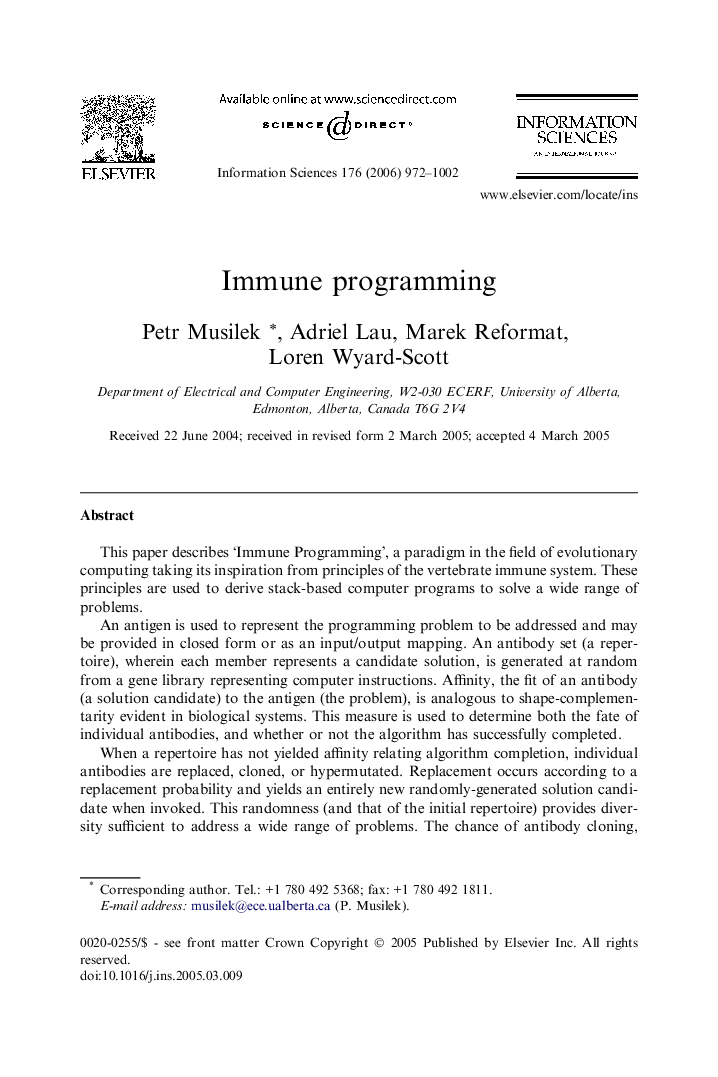| کد مقاله | کد نشریه | سال انتشار | مقاله انگلیسی | نسخه تمام متن |
|---|---|---|---|---|
| 396424 | 666437 | 2006 | 31 صفحه PDF | دانلود رایگان |

This paper describes ‘Immune Programming’, a paradigm in the field of evolutionary computing taking its inspiration from principles of the vertebrate immune system. These principles are used to derive stack-based computer programs to solve a wide range of problems.An antigen is used to represent the programming problem to be addressed and may be provided in closed form or as an input/output mapping. An antibody set (a repertoire), wherein each member represents a candidate solution, is generated at random from a gene library representing computer instructions. Affinity, the fit of an antibody (a solution candidate) to the antigen (the problem), is analogous to shape-complementarity evident in biological systems. This measure is used to determine both the fate of individual antibodies, and whether or not the algorithm has successfully completed.When a repertoire has not yielded affinity relating algorithm completion, individual antibodies are replaced, cloned, or hypermutated. Replacement occurs according to a replacement probability and yields an entirely new randomly-generated solution candidate when invoked. This randomness (and that of the initial repertoire) provides diversity sufficient to address a wide range of problems. The chance of antibody cloning, wherein a verbatim copy is placed in the new repertoire, occurs proportionally to its affinity and according to a cloning probability. The chances of an effective (high-affinity) antibody being cloned is high, analogous to replication of effective pathogen-fighting antibodies in biological systems. Hypermutation, wherein probability-based replacement of the gene components within an antibody occurs, is also performed on high-affinity entities. However, the extent of mutation is inversely proportional to the antigenic affinity. The effectiveness of this process lies in the supposition that a candidate showing promise is likely similar to the ideal solution.This paper describes the paradigm in detail along with the underlying immune theories and their computational models. A set of sample problems are defined and solved using the algorithm, demonstrating its effectiveness and excellent convergent qualities. Further, the speed of convergence with respect to repertoire size limitations and probability parameters is explored and compared to stack-based genetic programming algorithms.
Journal: Information Sciences - Volume 176, Issue 8, 22 April 2006, Pages 972–1002